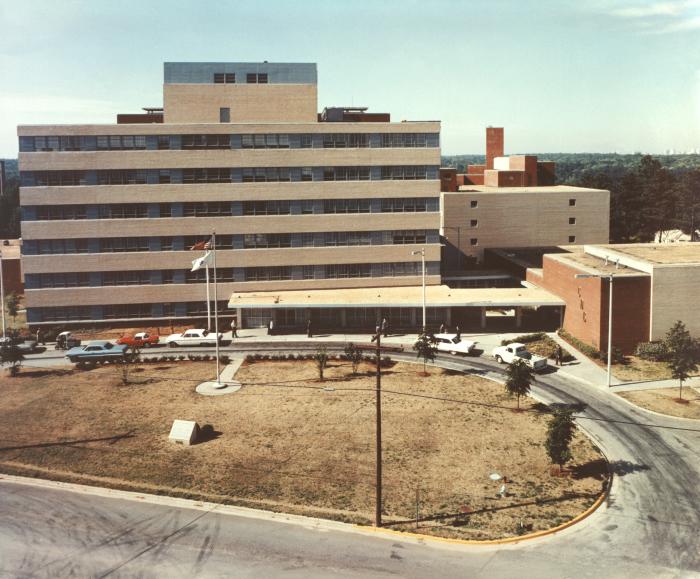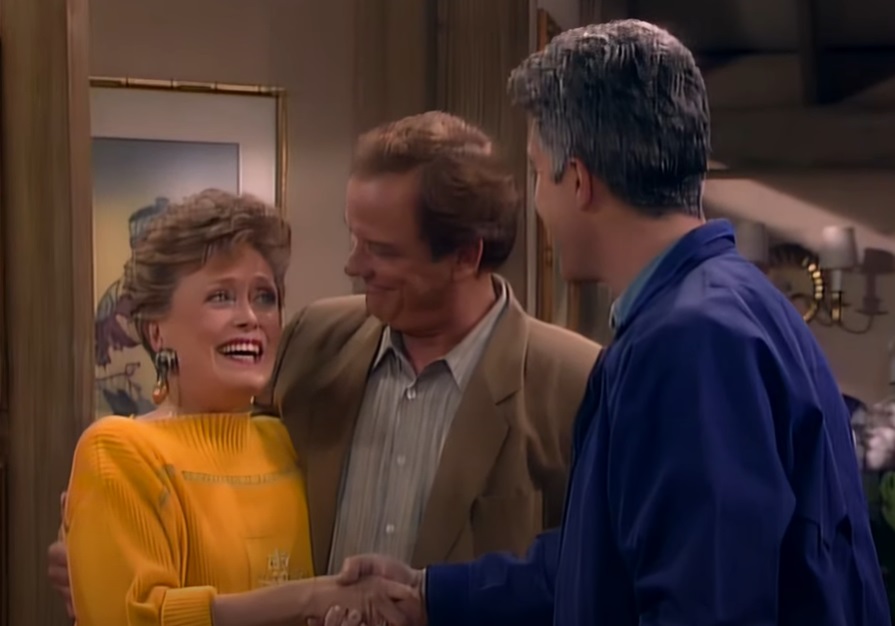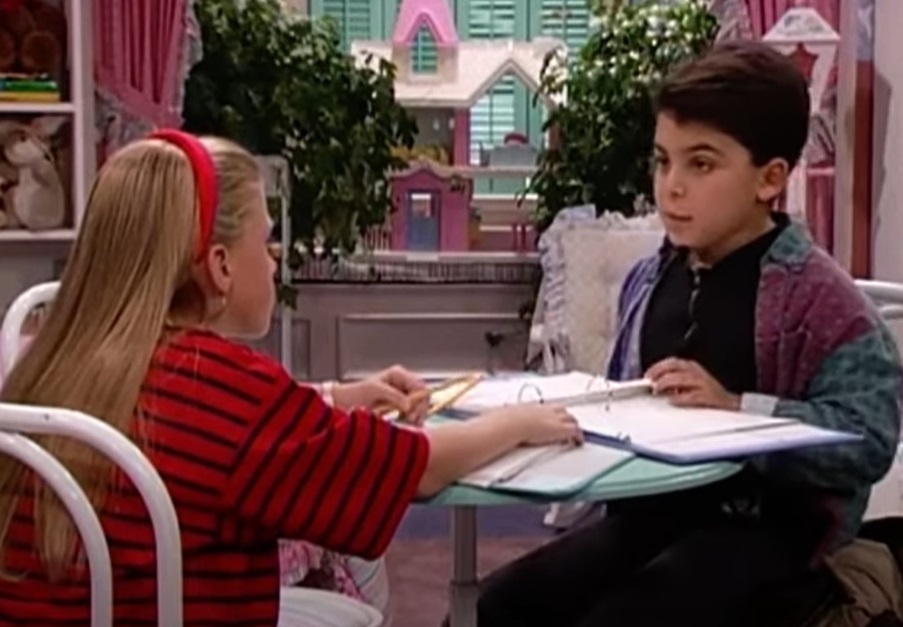Flashback To The 80s: The Decade That Defined Cool
We love the 80s for its bold fashion, unforgettable music, and groundbreaking pop culture. It was a time of innovation, creativity, and fun, where anything seemed possible. Still celebrated by those who lived it, our collective obsession with nostalgia urges us to share it.

Baby Jessica
In 1987, 18-month-old Jessica McClure fell into a well in Texas, sparking a dramatic 58-hour rescue operation. The event captivated the nation and highlighted the power of media in shaping public interest during crises.
 Susan Biddle, Wikimedia Commons
Susan Biddle, Wikimedia Commons
Pope John Paul II And President Regan
In 1981, both Pope John Paul II and President Ronald Reagan survived separate attempts on their lives. The Pope was shot in Rome by Mehmet Ali Ağca but survived after a lengthy recovery. Reagan was shot in Washington, DC by John Hinckley Jr, but also recovered after emergency surgery and continued his presidency.
 Ronald Reagan Presidential Library, Wikimedia Commons
Ronald Reagan Presidential Library, Wikimedia Commons
The CDC Recognizes AIDS
In 1982, the CDC officially recognized AIDS as a distinct disease, marking a critical moment in the fight against the epidemic. The recognition led to increased research and awareness, though the disease continued to devastate communities, particularly in the LGBTQ+ population.
 U.S. Centers for Disease Control and Prevention, Wikimedia Commons
U.S. Centers for Disease Control and Prevention, Wikimedia Commons
The Miracle On Ice
The Miracle on Ice occurred in 1980 when the US men's hockey team, primarily amateur players, triumphed over the strongly favored Soviet Union at the Winter Olympics. The victory symbolized American resilience and unity during the Cold War.
 Henry Zbyszynski, CC BY 2.0, Wikimedia Commons
Henry Zbyszynski, CC BY 2.0, Wikimedia Commons
Personal Computer
In 1981, IBM launched its first personal computer, the IBM PC, revolutionizing the tech industry. Its open architecture set the standard for future PCs, making personal computing more accessible and widely adopted.
 Ruben de Rijcke, CC BY 3.0, Wikimedia Commons
Ruben de Rijcke, CC BY 3.0, Wikimedia Commons
Commodore 64
Commodore International introduced the Commodore 64, an 8-bit home computer, in January 1982. The most common uses for the Commodore 64 were word processing, playing video games, and programming.
 Luca Boldrini, CC BY 2.0, Wikimedia Commons
Luca Boldrini, CC BY 2.0, Wikimedia Commons
Video Games
Video games exploded in popularity in the 80s, with arcade games like Pac-Man, Donkey Kong, and Space Invaders becoming cultural icons. Home consoles like the Nintendo Entertainment System (NES) and Atari 2600 brought gaming into living rooms, shaping the future of interactive entertainment.
There’s A Hole In The Ozone Layer
In the 1980s, scientists discovered a significant hole in the ozone layer over Antarctica caused by chlorofluorocarbons (CFCs) and other chemicals. This discovery raised global awareness about environmental issues and led to the 1987 Montreal Protocol, an international agreement to phase out ozone-depleting substances.

History's most fascinating stories and darkest secrets, delivered to your inbox daily.
Sally Ride In Space
In 1983, Sally Ride became the first American woman to travel to space aboard the Space Shuttle Challenger. Her historic flight broke barriers for women in science and inspired generations of young girls to pursue careers in STEM.
Space Shuttle Challenger
The Challenger disaster occurred on January 28, 1986, when the Space Shuttle broke apart just 73 seconds after launch. Tragically, all seven astronauts aboard did not survive. The crew, including Christa McAuliffe, a teacher selected to be the first civilian in space, became symbols of courage and sacrifice.
Halley's Comet
Halley's Comet made its closest approach to Earth in 1986, becoming visible from the Northern Hemisphere again after 76 years. Its return sparked global fascination and was celebrated with scientific observations and public excitement, as it would not be visible again until 2061.
The Fall Of The Berlin Wall
The fall of the Berlin Wall on November 9, 1989, marked a world-altering event. Built in the 1960s, it divided communist East Berlin from democratic West Berlin. While today's youth may find the idea of two Berlins strange, it was a reality for those who grew up in the 80s.
CNN Premieres
Perhaps not a global event, CNN allowed us to view global events constantly. CNN premiered on June 1, 1980, as the first 24-hour cable news channel. It revolutionized news delivery by providing constant updates and live coverage of global events.
 Allan Tannenbaum, Getty Images
Allan Tannenbaum, Getty Images
More Volume, More Fun
Mousse was the secret weapon for achieving big, voluminous hair in the 80s, adding body and texture to even the finest locks. With its height and boldness, teased hair became the ultimate symbol of the era's fearless approach to style.
Neon, Legwarmers, And Shoulder Pads Ruled
Shoulder pads and legwarmers defined 1980s fashion, creating bold, exaggerated silhouettes. Shoulder pads added a powerful look, while leg warmers, inspired by dance and aerobics, became a staple. Neon clothing, fueled by music videos, movies, and the fitness boom, was also a key trend.
 New World Pictures, Heathers (1988)
New World Pictures, Heathers (1988)
Hair Is Crimped And Curled
Crimping irons and perms were crucial for the bold, voluminous hairstyles of the 1980s. Crimping irons created wave-like texture, and perms delivered a curly, full-bodied look—each contributing to the era's signature playful and dramatic styles. 80s hair worked hard to prove that the higher, the better because gravity clearly didn't exist!
 City of Toronto Archives, Wikimedia Commons
City of Toronto Archives, Wikimedia Commons
ET Phones Home
ET the Extra-Terrestrial, directed by Steven Spielberg and released in 1982, became one of the most beloved films of the 1980s. The touching tale of a young boy befriending a stranded alien captivated audiences worldwide, becoming a cultural phenomenon and a defining symbol of 1980s cinema.
 Universal, E.T. the Extra-Terrestrial (1982)
Universal, E.T. the Extra-Terrestrial (1982)
Ferris Bueller's Day Off
Ferris Bueller's Day Off, released in 1986, is a classic teen comedy directed by John Hughes. The film follows Ferris (Matthew Broderick), a charming high school student who skips school for a day of fun in Chicago. Ferris symbolizes youthful rebellion and the carefree spirit of the 1980s.
 Paramount, Ferris Bueller's Day Off (1986)
Paramount, Ferris Bueller's Day Off (1986)
16 Candles
16 Candles, released in 1984 and directed by John Hughes, is a quintessential 80s teen comedy. The film follows Samantha (Molly Ringwald), a high school girl overshadowed on her 16th birthday by family chaos and her crush on a popular boy, capturing adolescence's awkwardness and emotional highs.
 Universal, Sixteen Candles (1984)
Universal, Sixteen Candles (1984)
Terminator
The Terminator (1984), directed by James Cameron, is a groundbreaking sci-fi action film that introduces the world to a cyborg assassin (Arnold Schwarzenegger) sent from the future to kill the mother of the future leader of human resistance. The movie's mix of futuristic technology, time travel, and relentless action influenced the genre and launched a successful franchise.
Back To The Future
Released in 1985 and directed by Robert Zemeckis, Back to the Future is a time-travel adventure in which teenager Marty McFly inadvertently journeys to the past in a DeLorean time machine invented by the quirky Dr Emmett Brown. The film became a cultural landmark, combining humor, sci-fi, and nostalgia, and led to two successful sequels.
 Universal, Back to the Future (1985)
Universal, Back to the Future (1985)
Top Gun
This iconic 1986 film follows the rivalry and camaraderie of Navy fighter pilots. It stars Tom Cruise as Maverick. With thrilling aerial combat, an iconic soundtrack, and standout performances, it became an essential part of pop culture and cemented Cruise as a Hollywood star.
We Are The World
"We Are the World", released in 1985, was a charity single composed by Michael Jackson and Lionel Richie. It was performed by more than 40 legendary artists under the name USA for Africa. The song aimed to raise awareness and funds for famine relief in Africa and became one of the best-selling singles of all time, symbolizing global unity and humanitarian effort.
Michael Jackson's Thrilling Moonwalk
Michael Jackson revolutionized pop music and dance in the 80s with his iconic moonwalk, first showcased during a "Billie Jean" performance in 1983. His groundbreaking album Thriller, released in 1982, became the best-selling album of all time, featuring hits like "Thriller," "Beat It," and "Wanna Be Startin' Somethin'," solidifying his status as the King of Pop.
 Zoran Veselinovic, CC BY-SA 2.0, Wikimedia Commons
Zoran Veselinovic, CC BY-SA 2.0, Wikimedia Commons
Madonna And The First MTV VMAs
Madonna made a lasting impact at the first MTV Video Music Awards in 1984, performing "Like a Virgin" in a now-iconic moment, including rolling around in a wedding dress. Her bold, provocative style and fearless performances helped define the era and solidify her as a pop culture icon, setting the stage for the VMAs to become a central platform for music and fashion.
 Frank Micelotta Archive, Getty Images
Frank Micelotta Archive, Getty Images
MTV
MTV, launched on August 1, 1981, revolutionized the music industry by being the first television network dedicated entirely to music videos. It transformed how people experienced music and became a cultural phenomenon, influencing fashion, trends, and the careers of countless artists throughout the 80s and beyond.
 Bernard Gotfryd, Wikimedia Commons
Bernard Gotfryd, Wikimedia Commons
M*A*S*H Finale
This sendoff broke ratings records. The M*A*S*H series finale, "Goodbye, Farewell and Amen," aired on February 28, 1983, and remains one of the most-watched television episodes ever. The emotional two-and-a-half-hour episode marked the end of the beloved series as the characters bid farewell to their time at the Korean War-era field hospital, reflecting on their experiences and personal growth.
 20th Television, M*A*S*H (1972–1983)
20th Television, M*A*S*H (1972–1983)
A Favorite Furry Troublemaker
ALF, aired from 1986 to 1990, was a sitcom about an alien named Gordon Shumway (nicknamed ALF) who crash-lands on Earth and moves in with a suburban family. The show's humor, featuring ALF's mischievous antics and love for eating cats, made it a pop culture sensation during the 1980s.
 Alien Productions, ALF (1986–1990)
Alien Productions, ALF (1986–1990)
Cheers Premieres
Cheers (1982–1993) was a beloved sitcom set in a Boston bar, where a quirky group of regulars and staff formed unlikely friendships. The success of the series would lead to three spinoffs: The Tortellis, Wings, and Frasier.
The Golden Girls
The Golden Girls (1985–1992) became a cultural icon, following four older women living together and navigating life with humor and heart. In addition to its funnier elements, the show was beloved for portraying serious issues in an endearing and relatable way.
 NBC, The Golden Girls (1985-1992)
NBC, The Golden Girls (1985-1992)
Full House
Full House was a family-centered show about a widowed father raising his three daughters with the help of his brother-in-law and best friend. It captured the humor of family life.
Polaroid Camera
The Polaroid camera became a popular household item in the 1980s. It offered instant photos that developed right before your eyes. Known for its iconic white-bordered prints, the camera embodied the era's fascination with immediate gratification and hands-on photography.
Waterbeds
In 1987, 20% of all mattress sales were waterbeds, and the market was worth $2 billion. Waterbeds, popular in the 1980s, were a trendy and novel alternative to traditional mattresses, offering a unique, wave-like motion for sleeping. Known for their comfort and style, they symbolized the era's fascination with luxury and unconventional home furnishings.
 Hans Peters, CC0, Wikimedia Commons
Hans Peters, CC0, Wikimedia Commons
Cabbage Patch Kids
Cabbage Patch Kids, the plush, soft-bodied dolls introduced in 1983, became a massive toy craze, sparking fierce competition among parents during the holiday season. Each doll had a unique face and name, and their "adoption" became a cultural staple, symbolizing the 1980s' love for collectible and personalized toys.
From A Magic Cube To The Rubik's Cube
The Rubik's Cube, invented in 1974 but gaining widespread popularity in the 80s, became a global puzzle sensation. Its colorful, twistable design challenged users to align the cube's sides, making it both a brain-teasing hobby and a symbol of 80s pop culture.
 Elekes Andor, CC BY-SA 4.0, Wikimedia Commons
Elekes Andor, CC BY-SA 4.0, Wikimedia Commons
Chicken McNuggets
McDonald's introduced Chicken McNuggets in 1983 and quickly became a fast food sensation. Their crispy, bite-sized appeal revolutionized the chicken nugget market, becoming a staple of McDonald's menu and a beloved snack for kids and adults alike.
 Fritz Saalfeld, CC BY-SA 2.5, Wikimedia Commons
Fritz Saalfeld, CC BY-SA 2.5, Wikimedia Commons
Big League Chew
Introduced in 1980, Big League Chew is shredded bubble gum that became popular for its fun, baseball-themed packaging. Marketed as a chewable alternative to tobacco, it quickly became a favorite among kids, especially with its unique "pouch" packaging that mimicked the look of chewing tobacco.
Delicious Nerds
Nerds, the colorful, bite-sized candy introduced by Nestlé in 1983, became a beloved treat of the 1980s. Known for their sweet and tangy flavors, Nerds came in small, separate compartments, offering a fun, crunchy, and nostalgic candy experience that captured the playful spirit of the decade.
 Nicolas Goldberg, CC BY-SA 3.0, Wikimedia Commons
Nicolas Goldberg, CC BY-SA 3.0, Wikimedia Commons
McCain And Sara Lee
In the 1980s, McCain and Sara Lee became famous for their frozen cakes, offering convenient, ready-to-serve desserts. McCain's line of frozen cakes and Sara Lee's iconic cheesecakes and pound cakes provided easy, delicious treats that became staples in many households, epitomizing the era's love for frozen convenience foods.
TCBY And Jell-O Pudding Pops
TCBY (The Country's Best Yogurt), which gained popularity in the 1980s, became a go-to spot for frozen yogurt, offering a healthier alternative to ice cream. Jell-O Pudding Pops, also introduced in the 1980s, were a beloved frozen dessert made from creamy pudding on a stick, combining convenience and indulgence in a cool, nostalgic treat.
Crystal Light And Diet Coke
In the 1980s, Crystal Light and Diet Coke became iconic beverages in the growing market for low-calorie drinks. Crystal Light offered various flavored, sugar-free drink mixes. Diet Coke, launched in 1982, became a popular alternative to regular soda, catering to health-conscious consumers and shaping the era's dieting trends.
Microwave Popcorn And Cool Ranch Doritos
Microwave popcorn became a popular convenience snack in the 1980s, allowing people to enjoy fresh popcorn at home with just the push of a button. At the same time, Cool Ranch Doritos, introduced in 1986, quickly gained a following for their bold, tangy flavor, becoming a beloved snack that added a new twist to the classic chip.
 frankieleon, CC BY 2.0, Wikimedia Commons
frankieleon, CC BY 2.0, Wikimedia Commons
Do They Know It's Christmas?
"Do They Know It's Christmas?", performed by the supergroup Band Aid, featured notable British and Irish musicians like Bob Geldof and Midge Ure. Written to raise awareness and funds for famine relief in Ethiopia, the song became one of the best-selling singles ever. This 1984 anthem inspired a wave of celebrity-driven charity initiatives—but there’s a disturbing reason why some today have spoken out against the charitable anthem. On the heels of a brand new remaster of the song, artists like Ed Sheeran have spoken out against it, saying that it can promote harmful stereotypes of African people and has undertones of colonialism and white saviorism.



























